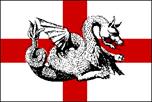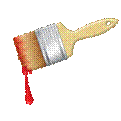Charles Brooking is a fascinating and knowledgeable collector of architectural detail, The Brooking Collection of Architectural Detail, and as Surveyors we find his lifelong quest to collect British building details unique, informative and valuable and a collection that must be kept intact for years to come. If you need help and advice with regard to building surveys, structural surveys, structural reports, engineers reports, specific defects report, dilapidations or any other property matters please free phone 0800 298 5424.
The following is one of a series of interviews with Charles Brooking, Historic and ListedCharles Brooking is a fascinating and knowledgeable collector of architectural detail, The Brooking Collection of Architectural Detail, and as Surveyors we find his lifelong quest to collect British building details unique, informative and valuable and a collection that must be kept intact for years to come. If you need help and advice with regard to building surveys, structural surveys, structural reports, engineers reports, specific defects report, dilapidations or any other property matters please free phone 0800 298 5424.
Surveyor: In 1989 did you have an opportunity to rescue architectural items from St Georges Hospital?
Charles Brooking: I had been able to recover a few items from St Georges Hospital in 1981 because my father knew the director of Grosvenor Estates at the time. I recovered a fireplace they were taking out, designed by William Wilkins, with an actual cast iron grate but left the chimney piece. I also rescued a whole range of sash pulleys which were very interesting dating from 1829 and 1859 when they added another floor to the building.

I additionally rescued items also in Knightsbridge buildings' including one which was 1780 and another was built by William Cubit in 1830/3. The next group were doctors' accommodation or doctors' cottage it was called and they were sort of apartments for doctors built about 1890, hard sort of engineering brick with bay windows next door to the Pizza on the Park with these rescues taking place in 1980.
Then in 1989 I went back when they were doing the actual building and recovered the main entrance doors! The door to the house was designed by William Cubitt which had characteristic studs typical of Belgravia imitating a Roman door as it was not neoclassical and sash box sections.

Rescue defined
Charles Brooking defines a rescue as saving a window or door or staircase that would be doomed.
Charles Brooking was a pioneer in the rescue of architectural detailing as many years ago it was very much considered a strange and an unusual past time to want to rescue old parts of buildings with everything new and shiny being so important.
William Cubitt
William Cubitt was born in 1785 in Norfolk and was an English civil engineer and millwright and worked on major constructions including Crystal Palace and many projects for the South Eastern Railway and Great Northern Railway.
Surveyor: Tell me a bit more about the studs?
Charles Brooking: Well they were turned Orion studs around the edge of the panels as a Greek revival or Roman inspiration; these were widely used in Belgravia in the Greek revival.
Surveyor: Typically the material was?

Charles Brooking : Either ebony or cast iron or hardwood but often ebony and then carefully nailed into, fitting into little round holes overlapping those, they were around the edge of the panel which was a surround with a Greek revival more than two panel doors, half with a central opening so they were double doors and very tall.
Surveyor: What sort of thickness?
Charles Brooking: Oh goodness about I should think two and a half inches or more.
Surveyor: Height and width?

Charles Brooking: Height at least seven foot, jolly big things to manoeuvre I can tell you. I had to get a van!
Surveyor: What sort of width?
Charles Brooking: Beech door I suppose about two to two and a half feet. The door from the 1780's house, number 7, was six panels with a very nice lions mask knocker.
Surveyor: And what timber?
Charles Brooking: That would be Baltic pine.
Surveyor: Was it painted?

Charles Brooking: It was painted with Astragal mouldings around the edge of the around the panels.
Astragal Moulding definition
Astragal moulding can also be referred to as a miniature torus and is a half round surface surrounded by two flat planes or fillets. The Greek and Latin vertebra is where the word Astragal is derived from with this type of beading resembling a vertebra.
Surveyor: And this would have a lead based paint on it?
Charles Brooking: It would have done yes. Flush on the inside with just beaded panels. Very nicely preserved but it had been nailed up a lot of the time because people had broken in and there were great big nails driven it but it was still a good example.
So that's what I rescued from St George's Hospital together with balusters from the William Wilkins staircase, and an over door from the board room.

Surveyor: What do you mean by an over door?
Charles Brooking: An over door is a sort of, it was a tablature which went above the door and it actually had lovely letters and brass board room in typical 1830's font, very attractive.
Surveyor: How would you describe an 1830's font?
Charles Brooking: I could draw one; it is squat. Although I started collecting Bakelite letters and numbers I was very attracted to the different fonts. I am not au fait with the terms but I know that it's a classic type.
So that was a very interesting rescue.

I have also been able to rescue items in many other houses including recently a house in Eaton Square, SW1 which is 1820's with cupboard shutters and door fittings. There is an awful lot in London it is endless! In Eccleston Street, SW1 I found myself in an old terrace of 1881, where fifteen houses were to be demolished in the summer of 1977. They smashed everything up including the hob grates!
If you found this article on The Brooking Collection of Architectural Detail interesting you may also be interested in the following articles on our website:
Major rescue at Parade Street, Paddington, London
Henry Hope window manufacturers and other manufacturers
Windows and the Great Fire of London
Glass
Rising Damp, condensation and damp through walls
References:
TheBrookingCollection.com
DartfordArchive.org.uk
IHBC.org.uk
ProjectBook.co.uk
Independent Surveyors
If you truly do want an independent expert opinion from a surveyor with regard to building surveys, structural surveys, structural reports, engineers reports, specific defects report, dilapidations or any other property matters please contact 0800 298 5424 for a surveyor to give you a call back.
Commercial Property Surveyors
If you have a commercial property, be it leasehold or freehold, then you may wish to look at our Dilapidations Website at www.DilapsHelp.com and for Disputes go to our Disputes Help site www.DisputesHelp.com.
We hope you found the article of use and if you have any experiences that you feel should be added to this article that would benefit others, or you feel that some of the information that we have put is wrong then please do not hesitate to contact us (we are only human).
The contents of the website are for general information only and is not intended to be relied upon for specific or general decisions. Appropriate independent professional advice should be paid for before making such a decision.
All rights are reserved the contents of the website are not to be reproduced or transmitted in any form in whole or part without the express written permission of 1stassociated.com

